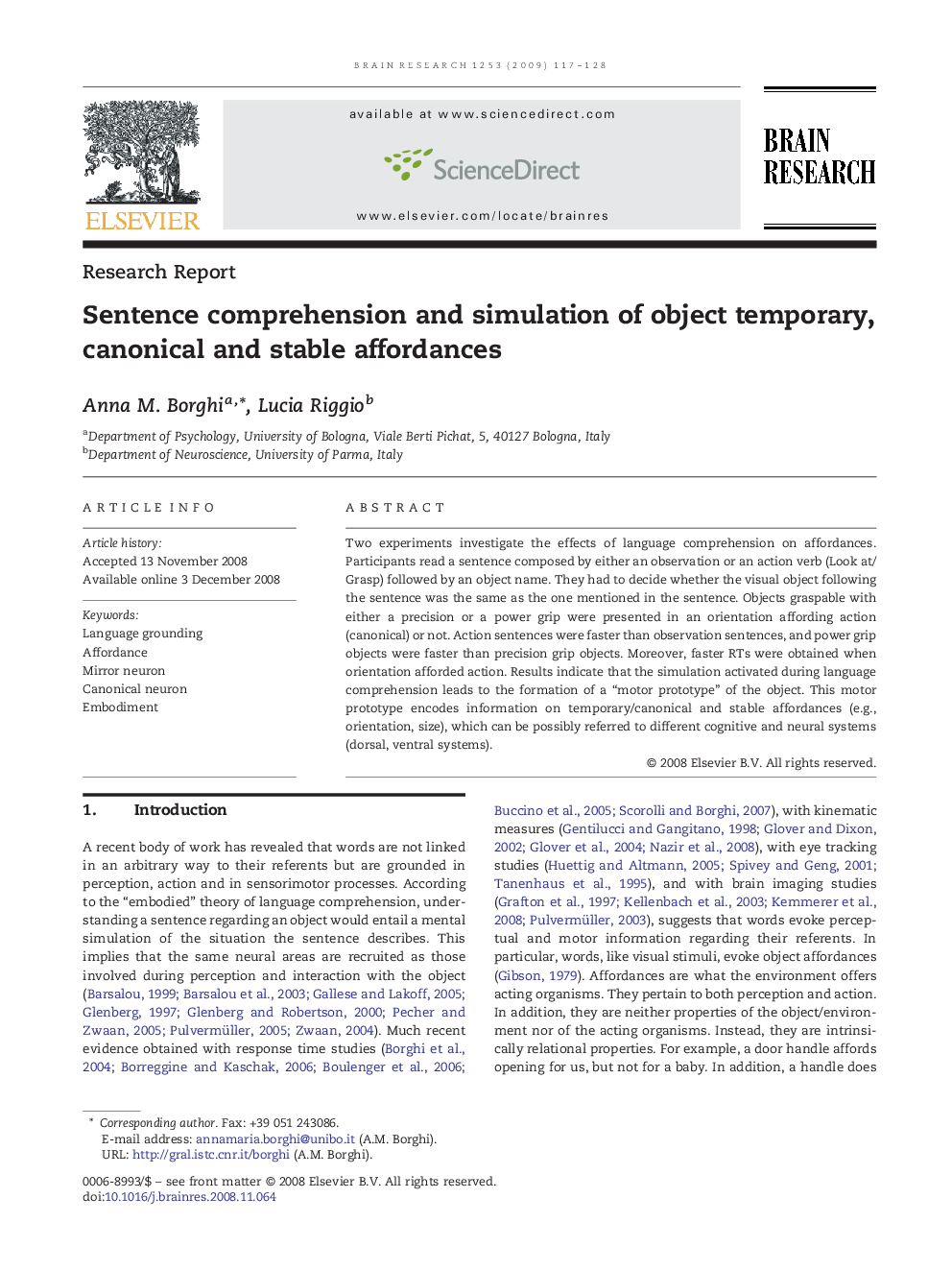| Article ID | Journal | Published Year | Pages | File Type |
|---|---|---|---|---|
| 4328767 | Brain Research | 2009 | 12 Pages |
Two experiments investigate the effects of language comprehension on affordances. Participants read a sentence composed by either an observation or an action verb (Look at/Grasp) followed by an object name. They had to decide whether the visual object following the sentence was the same as the one mentioned in the sentence. Objects graspable with either a precision or a power grip were presented in an orientation affording action (canonical) or not. Action sentences were faster than observation sentences, and power grip objects were faster than precision grip objects. Moreover, faster RTs were obtained when orientation afforded action. Results indicate that the simulation activated during language comprehension leads to the formation of a “motor prototype” of the object. This motor prototype encodes information on temporary/canonical and stable affordances (e.g., orientation, size), which can be possibly referred to different cognitive and neural systems (dorsal, ventral systems).
